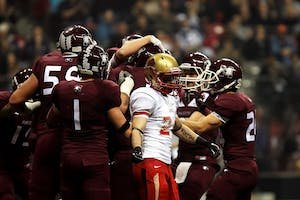Title: The Ever-Evolving Landscape of College Football
Introduction
College football, deeply ingrained in the American sporting culture, has undergone significant transformations over the years. From its humble beginnings in the late 19th century to the multi-billion dollar industry it is today, the sport has continually evolved. In this article, we will explore the key aspects of college football's evolution, including its history, its impact on universities, the role of student-athletes, and the ongoing debates surrounding the sport.
The Early Days
College football traces its roots to the late 1800s when teams like Princeton and Rutgers played the first recognized game in 1869. Initially, football was more of a campus pastime than a major sport. However, it quickly gained popularity, and by the early 20th century, college football was a significant part of American culture.
Impact on Universities
As college football grew, it brought unprecedented attention and financial resources to universities. Alumni and supporters poured money into their alma maters, building stadiums, and funding athletic programs. The success of a football team often translated into increased applications, enrollment, and donations. The sport became a crucial marketing tool for universities, fostering school spirit and pride.
Student-Athlete Dilemma
One of the most debated aspects of college football is the concept of the student-athlete. While players are students, they are also athletes, and the demands of both roles can be overwhelming. The sport's intense training and game schedules can hinder academic progress. This issue sparked debates about whether college athletes should be compensated beyond scholarships, as they generate significant revenue for their universities and the NCAA.
The NCAA and Regulation
The National Collegiate Athletic Association (NCAA) plays a pivotal role in governing college football. It establishes rules, regulations, and guidelines for athletes, coaches, and universities. Over the years, the NCAA has faced criticism for its handling of various issues, including athlete compensation, eligibility, and recruitment practices. Recent developments have seen changes in NCAA policies, signaling a shift toward allowing athletes to profit from their name, image, and likeness (NIL) rights.
Modern Challenges
College football faces numerous modern challenges, including concerns about player safety, the unequal distribution of revenue among universities, and the ever-expanding gap between Power Five conferences and smaller programs. Additionally, there are ongoing debates about expanding the College Football Playoff, which could reshape the landscape of the sport once again.
Conclusion
College football's evolution is a complex and ongoing story. It has grown from a casual campus pastime to a multi-billion dollar industry with significant influence on universities and student-athletes. As the sport continues to adapt to changing times and societal expectations, it will be fascinating to see how college football evolves in the years to come, while preserving the spirit and traditions that make it a cherished part of American sports culture.
